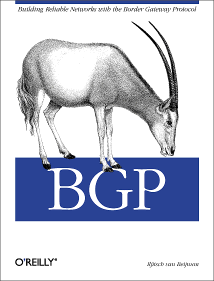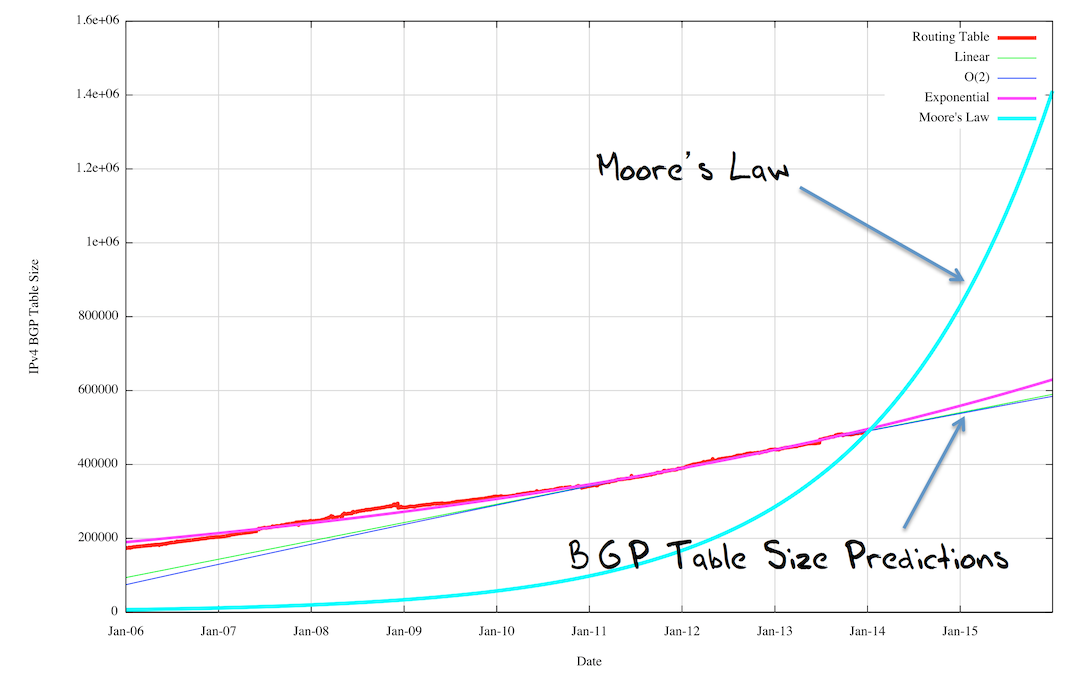
|

|

|
|
Home ·
BGP Expert Test ·
What is BGP? ·
BGP Vendors ·
Links ·
Archives ·
Books ·
My New BGP Book | ||
 (advertisement)
(advertisement)
| ||
|
"Nothing in BGP looks like it's melting" (posted 2014-06-30)
At the February NANOG meeting, Geoff Huston talked about BGP in 2013. For a quarter of a century, there have been concerns about BGP hitting scalability issues. The Internet Architecture Board even organized a meeting to discuss the issue in 2006. However, Geoff argues that the current growth is not presenting any immediate problems: "Nothing in BGP looks like it's melting". One of the interesting things is that the number of prefixes in BGP continues to grow at about 11% per year even though Asia and Europe were out of fresh IPv4 addresses by 2013. The number of IPv4 addresses covered by the prefixes advertised in BGP didn't grow as fast, though. Annoyingly, 50% of the half million prefixes in BGP are small address blocks (more specific prefixes) that fall within a larger address blocks (aggregates) that are also present in BGP. And the really amazing thing is that 80% of the number of daily BGP updates—which has been extremely stable for years—is caused by these more specifics. The graph that blew my mind is this one, BGP growth vs Moore's Law:
 However, that's assuming that the processing required scales linearly with the number of prefixes. That's probably (close to) true for running the BGP protocol. But that's not the hard part. The hard part is matching destination IP addresses in millions of packets per second with half a million or more prefixes in the forwarding information base (FIB) that the router hardware uses. There's pressure on FIB performance from two directions: the number of prefixes and the number of packets per second. So FIBs need to get faster and get bigger at the same time. It doesn't look like we're going to be in trouble in the immediate future, but it would still be good if we could get rid of all that unnecessary deaggregation. Anyway, that's all IPv4. What about IPv6? Yes, it's growing. But not setting the world on fire by any stretch of the imagination. At current rates, IPv6 will reach parity with IPv4 in 2030. However, IPv6 deaggregation levels seem to be heading towards the 50% mark where IPv4 has been for some time. Read the slides here, or download an almost 2 GB MPEG4 file of the presentation from the NANOG website. The presentation is 25 minutes and 10 minutes worth of questions and remarks from the audience, including one of the big deaggregation offenders. Or read Addressing 2013 and especially BGP in 2013 - The Churn Report, especially if you're not completely sure about all the background and terminology.
|
